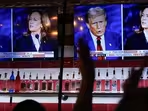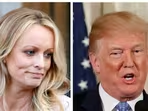Behind the Scenes Secrets of Frozen That We Can't Let Go
Some things never change—like our enduring love for a certain pair of Scandinavian sisters and their talking snowman friend.
It's been a full decade since Disney finally got around to adapting Hans Christian Andersen's 1845 fairy tale The Snow Queen, a plan they'd been kicking around since 1937. And though it took years and more than a few rewrites to nail the story of Arendellian princesses Elsa (Idina Menzel) and Anna (Kristen Bell)—fun fact: Elsa with her abilities to manipulate ice and snow was initially conceived as a villain—it's good that the team continued to test the limits and break through.
Released on Nov. 27, 2013, Frozen, with its warm hug-loving hilarious snowman Olaf (Josh Gad), ability to turn the typical Disney tropes on their head and that earworm of a song, went on to gross more than $1.2 billion worldwide.
Its 2019 followup, meanwhile, remains the highest-grossing animated movie of all time with a lifetime worldwide earning of $1.45 billion and a legion of devoted fans of all ages. (Just try to convince us that Kristoff's '80s-style power ballad "Lost in the Woods" was not written with an audience of Gen X and millennial parents in mind.)
So, uh, no, Disney will not be letting these lovable characters go.
After announcing in February that they were working on a third Frozen installment, Disney CEO Bob Iger recently revealed that, actually, they're doing the next right thing and simultaneously creating two potential sequels.
Bell, for one, is anxious to build a snowman sequel. "Idina recently said she would do it, and I feel like if we're all in, like, what are we waiting for?" she posed during an appearance on The Tonight Show last year. "We want it. Let's do it."
But before we venture into the unknown of a third and fourth Frozen story, follow us as we relive all the magic of the OG film.
1. An adaptation of Hans Christian Andersen's 1845 fairy tale The Snow Queen, Frozen was actually in development at Disney for almost a decade (and was briefly considered for a hand-drawn animated feature back in 1937). The first modern attempt happened in 2002, and when 2003 also proved unsuccessful, more stalled attempts followed over the years. Frozen really didn't start coming together until Christopher Buck, who directed Tarzan, came aboard in 2008, but the film wasn't commissioned until 2011 following Tangled's box office success. And in 2012, Jennifer Lee, who initially came on as a screenwriter, was named co-director, making her the first woman to direct an animated film by Walt Disney Animation Studios.
2. The movie was originally going to be titled The Snow Queen after the original fairy tale, but the filmmakers decided to change it to Frozen "because, to us, it represents the movie. Frozen plays on the level of ice and snow but also the frozen relationship, the frozen heart that has to be thawed," producer Peter Del Vecho explained to Bleeding Cool, denying it was inspired by Tangled. (The Snow Queen title was still used overseas.)
3. Menzel and Bell auditioned and met with the producers of Tangled for the role of Rapunzel, which ultimately went to Mandy Moore. (Fontana originally auditioned for the role of Flynn in the 2010 film as well).
Bell, whose dream since she was a little girl was to voice a Disney character, was the "very first actress" to audition for Anna, with Lee saying, "We did audition a lot of people for that but she was the first and the best. We just fell in love with her."
4. Menzel's audition, meanwhile, was actually a table-read with Bell before both had been officially cast, according to Lee: "They read the whole script and at the end—we didn't have any songs written yet—and what they did was sing a duet and they sung 'Wind Beneath My Wings,' but they sung it like sisters and what you mean to me. And there wasn't a dry eye in the house after they sang...that is when they knew, that was the whole potential and understanding the power of music and of what this emotional story can be."
5. In the early versions of the project, Elsa was actually the villain of the story (with one of the early concept art designs being inspired by Bette Midler and her "showgirl stage presence"), according to former Disney animation designer Claire Keane, who released the image on her web site.
"Originally, she was much more villainous," Buck told Nerdist. "It's very easy to go in that direction for that type of character, but as the time went and we evolved the story, she became much more three-dimensional. Before, I thought she was one-dimensional but a very fully fleshed out character."
The moment the character really changed, though, was after they watched earlier cuts and realized it wasn't exactly working: "Someone came up with the brilliant idea...'what if the protagonist, Anna, and Elsa were related?'" art director Michael Giaimo revealed. "Because they weren't always siblings, they weren't always related, and that was the beginning of finding these characters."
6. The hardest character for the Frozen team to nail down aside from Elsa was actually Olaf, who was originally then-villainous Elsa's first guard. "She created these snowman guards and Marshmallow was kind of a holdover from that because he was this scary snowman guard. Olaf was the very first guard she created," Buck explained, adding he was still funny at that time. After changing the character of Elsa completely, it wasn't until the directors first sat down with Gad that they found the character. "Josh adlibbed the line 'it's like a baby unicorn' and there was something about that innocence," Del Vecho told Kidz World.
7. One main character who wasn't originally in the movie was Hans, Anna's suitor-turned-villain, with Giaimo explaining, "Hans was never originally in the story in older versions...Kristoff always was in the story or a version of the Kristoff character and Anna. And then Hans was brought in at one point but he wasn't always a villain who turned initially, and then someone came up with the idea of him turning. He was always potentially a villain, but we gave it away much sooner."
8. Anna's "Wait what?" catchphrase? An ad-lib by Bell.
9. The scene that took the longest to create was Elsa walking out onto the balcony of her new palace, which took over 132 hours (five days and a few hours more) to render.
10. After having a few of the first songs they originally composed for the film not make it in, songwriting couple Robert Lopez and Kristen Anderson Lopez were feeling a little low, so they went for walk in Brooklyn's Prospect Park. Listening to songs by Adele and Avril Lavigne and being surrounded by nature, Anderson-Lopez told Playbill, " We were in this kind of emo place of imagining what it would be like to be this perfect person who messed up once, and was chased away from everything she has known and all the people she has been sacrificing for."
Within a day, they would write the film's most iconic song that would go on to sell over 10 million copies in 2014 and win the Oscar for Best Original Song.
11. And after hearing "Let It Go" for the first time, Lee said she knew they had to rework the character of Elsa and her motivations completely. "Half of us were crying. And then I just went, 'I have to rewrite the whole movie,'" she said on the Scriptnotes podcast. "I really, it was—I was just like I'm going to go lie down for a couple minutes. But it was the best thing. We knew we had the movie."
12. On the same podcast, Lee admitted there was "a lot of push and pull" when it came to Elsa's look after her transformation via "Let It Go" and how sexy to make her after this awakening. "Everyone was seduced by her. And so there was this tug of war I think, a bit, of letting people have a little—people who wanted to have that a little and not be afraid of it, but not make it a sexual statement," the co-director explained. "It's more a moment of, for me, it was like you strut and you say nobody is looking, this is what I'm going to — I'm not going to be afraid of my sexuality. I'm not going to be afraid of who I am. I'm not going to be afraid of anything about myself."
13. After eagle-eyed fans spotted one of many easter eggs in the film—Tangled's Rapunzel (post haircut) and Eugene briefly appearing in a scene during the morning of Elsa's coronation—a compelling fan theory that tied together Frozen, Tangled and Little Mermaid surfaced and the argument was pretty compelling: Anna and Elsa's parents died when their boat sank...what if it was when they were on their way to the Tangled pair's wedding? And what if the sunken ship in The Little Mermaid is the ship they were sailing on?!
14. This theory only works if you believe Anna and Elsa's parents actually did die in the shipwreck, something Buck speculated about in a Reddit AMA, saying, in his mind, the King and Qyeen of Arendelle, as well as their newborn "baby boy," did not actually die after being shipwrecked. (Who knew they had a son?) He said they washed up on the shore of a jungle and built "a tree house" before being "eaten by a leopard." That baby boy? Tarzan, of course.
"That's my fun little world," he later told MTV. While the Frozen and Tarzan theory isn't official, Buck said, "Whatever people want to believe, go for it. If you want to tie them all together, then do it."
15. The original ending of the film was drastically different, with the earlier versions, of course, presenting Elsa as the villain and not having Anna and Elsa related. Beginning with a prophecy about "a ruler with a frozen heart will bring destruction to the kingdom of Arendelle," viewers would learn Elsa became the Snow Queen after she was left at the altar and decided to freeze her own heart, according to EW. By the end of the film, Anna convinces Elsa to use her powers to save Arendelle from an avalanche started by Hans, with the ultimate reveal being the prophecy was actually about the two-faced prince. (Elsa's heart would then unfreeze, making her capable of love again.)
"The problem was that we felt like we had seen it before," Del Vecho told EW of the original ending. "It wasn't satisfying. We had no emotional connection to Elsa—we didn't care about her because she had spent the whole movie being the villain. We weren't drawn in. The characters weren't relatable."
Disclaimer: The copyright of this article belongs to the original author. Reposting this article is solely for the purpose of information dissemination and does not constitute any investment advice. If there is any infringement, please contact us immediately. We will make corrections or deletions as necessary. Thank you.
Title:Behind the Scenes Secrets of Frozen That We Can't Let Go
Url:https://www.investsfocus.com







